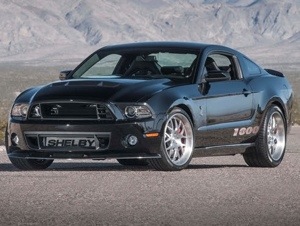By Bernhard Warner February 28, 2013 3:58 PM EST
Automakers, not smartphone and tablet manufacturers, stole the spotlight at Mobile World Congress this week with a series of pronouncements about the future of the “connected car.” Ford brought 17 kitted-out cars, pick-ups, and vans to show off what the new models were capable of; options included an in-dash Spotify app to stream 20 million songs and, for the safety conscious, “Active Stop” sensors built into the windshield that scan the road ahead for hazards and slow the engine automatically to avoid collisions. Not to be outdone, General Motors announced an alliance with AT&T Wireless to bring high-speed 4G LTE connectivity to 2015 Chevrolet, Buick, GMC, and Cadillac models for sale beginning next autumn.
There’s a lot riding on the bet that consumers want car tech that functions like a smartphone and offers safety and diagnostic features. By 2015, 20 percent of all new vehicle sales will be what the industry calls connected cars, according to the telecoms trade group GSMA, which could provide a much needed boost for a foundering industry.
Even automakers and mobile operators have their doubts. “A car is a car,” says Nathalie Leboucher, head of Smart Cities program, at the French mobile operator Orange. “It is not a smartphone on wheels.”
Before the connected car becomes a success, the industry will have to solve five big problems:
Dated software. Don’t be fooled by that new car smell. The in-dash operating system of the most sophisticated new cars runs on a “software kernel” that is at least five years old, says Derek Kuhn, vice president for sales and marketing at auto software developer QNX, which has provided software for Mercedes-Benz, Audi, and BMW. That makes the technology about as old as that second-generation iPhone sitting unused in your bottom drawer.
Reliability is important—and boring. Swapping out your car’s OS every 18 months for a new one is not a business carmakers want to be in. There’s a reason for that: Automakers need reliability more than they need to satisfy consumer demand for the latest tech features. Yes, software updates can be downloaded onto the car’s OS, even over the air. But during the typical seven-year life span of a car, automakers fear, a major bug might knock out the software that controls everything from diagnostics to apps. “We cannot have a scenario where 300,000 cars have to go back to the dealership at once to have the SIM card replaced,” says Marcus Keith, head of project at Audi Connect.
Roaming? Or no roaming? International roaming agreements among countries are still a patchwork, concede mobile operators and automakers. In Europe, at least, that’s problematic. If you travel from, say, your home country of France into neighboring Spain and get into an accident, it’s still unclear where the emergency response phone call from your in-dash control unit will be routed—to local Spanish police or to the French back home?
The $15 app. If you’ve already racked up a big iPhone or Android apps bill, you’ll love what automakers are charging for their apps. Toyota, for example, showed off its Touch & Go European app store at MWC. It charges €5.99 ($7.83) for an app that points out nearby parking options and €11.99 for one that lists fuel prices at nearby gas stations. (You could get the latter for free on a traffic-planning app like Waze or on GasBuddy.
Who really wants another contract? As the GM-AT&T Wireless alliance shows, automakers are cutting deals with carriers to be the exclusive mobile operator inside the car. For Verizon Wireless or T-Mobile customers, that means signing on for an additional service agreement in order to fully wire the family Buick. Why force the consumer into such a headache? Ford is calling on the industry to scrap these exclusive carrier deals and instead allow consumers to bring their existing mobile contracts—an effort would take technological development and intra-company cooperation.



